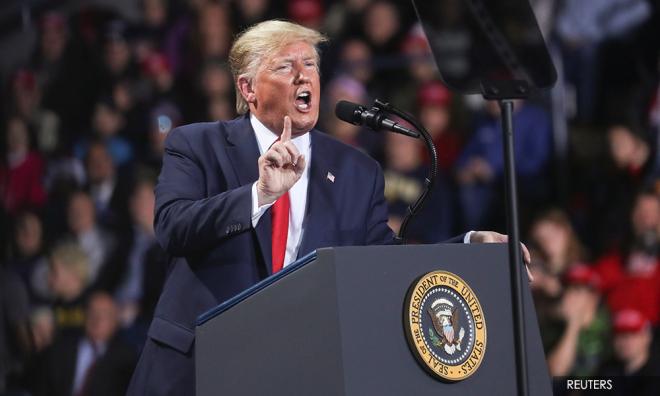
Published by Malay Mail, image from Malay Mail.
The South China Sea remains a flashpoint that is potentially vulnerable to outbreak of armed conflict among the claimant nations – China, Vietnam, the Philippines, Malaysia and Indonesia.
China’s militarisation of the South China Sea by way of installation of military hardware and upgrading of the facilities for military purposes are not conducive for a peaceful or non-military solution.
Examples include the construction of hangars and bases for the People’s Liberation Army (PLA) Navy and Air Force as part of the wider anti-access, anti-denial (AA/AD) first-line of defence strategy and “blue water navy” ambitions on the Spratly Islands, and the Fiery Cross, Mischief and Subi reefs, etc.
It is very hard to de-escalate when the infrastructure and facilities are not only put in place but entrenched.
Obviously, military might is not the solution or at least either desirable nor sustainable solution here. Nonetheless, as a sovereign state, we have a duty and must be prepared to defend our interests and assets (natural or otherwise) if need be.
So, what then would be the non-military solutions or options on the table?
The only way forward would be “joint-development” at both the government-to-government (G2G) and people-to-people (P2P) levels.
Actually, way back in 1986 (and 1988), the late Deng Xiaoping had first proposed that resolving overlapping territorial claims in the South China Sea require “pursuing joint development” (particularly over the Spratly Islands).
But here there is a difference.
There should not be any presupposition or pre-condition set by China – whether implicitly or explicitly – that it alone is entitled to lay indisputable claim to the South China Sea.
The other countries should not be expected to give up, directly or indirectly, their sovereign claims on the respective parts of the South China Sea before and during the negotiation process to discuss joint-development projects.
How would joint-development take shape in reality?
As it is, China hadnever given up on the idea of joint-development, and had offered to engagewith Vietnam and the Philippines.
In November 2017, China and Vietnam agreed to conduct follow-up actionregarding joint inspection in Gulf of Tonkin for the purpose of demarcation and exploration of joint-development in the area.
On the other hand, China and the Philippines signed Memorandum of Understanding (MOU) on Cooperation on Oil and Gas Development in November 2018. This in itself is remarkable as both countries were embroiled in spats arising from the overlapping claims.
The agreement came after incidents such as the confiscation of the Filipino fishermen’s catch by Chinese coast guards (2018) on the one hand and the detention of Chinese fishermen by the Philippine coastal guards (2016) on the other and not least, the Scarborough Shoal standoff in 2012.
Notwithstanding, there is a catch (pun intended).
China insists that the Philippines forgo its award on the basis of the provisions of the 1982 United Nations Convention of the Law of the Sea (UNCLOS) by the International Permanent Court of Arbitration in The Hague, 2016.
This was in connection with an offer of a controlling stake (60%) for the Philippines in a proposed joint energy exploration in the West Philippine Sea.
There are no concrete responses as yet.
Be that as it may, the model for joint-development as proposed by China remains a viable and feasible option – both for the medium- and long-term.
In conceptualising the model, however, the fundamental poser remains this, namely:
Whether the issue of a sustainable and definitive resolution to the problem of overlapping claims should be resolved in expectation of the joint-development dividend or the resolution is the goal/ the dividend itself.
In other words: Should the claimant countries brace themselves for eventual settlement when they negotiate for joint-development?
Or, ought the parties regard agreement on joint-development as having resolved the underlying issue of overlapping claims?
However, the approach or “methodology” is equally important. By that it meant the form by which the joint-development is to take place.
As mentioned, following China’s model, a joint-venture (JV) entity or special purpose vehicle (SPV) could be formed. Or even a consortium comprising companies from China and the other claimant country.
Here, through the state-owned enterprises (SOEs) or government-linked companies (GLCs), however one might want to term them, the State or government’s involvement would be inevitable, even if ever so indirectly.
In terms of investment, the State or government (as majority shareholder in the form of an incorporated entity) via the SOE or GLC provides the cash injection conditioned on a series of swap arrangements (e.g. warrants, i.e. cash for shares or debt/bond plus equity/shares in return).
Or the joint-development could be structured along the vertical lines of up-, mid-, and down-stream activities.
This might involve the claimant country (say, Vietnam) being the sole “licensed or exclusive holder” of the rights to exploration and primary or deep-sea extraction of hydrocarbon reserves or petroleum deposits in the sub-seabed for a fixed period. Thereafter, China will assume the rights.
As for mid-stream and down-stream, both parties would be jointly-involved. Or the scenario could be reversed whereby the upstream activities of resource drilling would be in the form of a JV or a consortium.
Speaking of tax arrangements, both China and the claimant country could enter into avoidance of double taxation agreements. And also formulate a bespoke bilateral tax treaty which seeks to minimise or mitigate possible incidences or provide commitment to avoid aggressive tax avoidance in the form of base erosion & profit shifting (BEPS).
So, the bilateral or joint-development activities will be structured in such a way so as to ensure that any off-setting or deductions would be tempered with provisions that funnel – say 70 per cent of profits – to a special purpose fund which cannot be repatriated or rediverted back to the country of origin of the oil & gas company for perhaps ten years (“reverse” or “negative tax holiday”).
The retained profits can only be used or recycled back into the joint-development projects (whether oil & gas, eco- or marine tourism fisheries, etc.)
Thus, part of the revenue is locked in and also pooled – modelled after the Coal and Steel Community, the basic paradigmatic foundations of the European Economic Community (EEC) and later on the EU.
Joint-development between China and the claimant country, including Malaysia, should not be simply dismissed as pure fantasy or a forlorn hope. But an action plan or roadmap should already be put in place to provide the pre-conditions for the next stage which ideally should be the negotiations proper.
Towards this end, the Asean Code of Conduct for the South China Sea should include a Political Declaration – analogous to the Withdrawal Agreement between the UK and the EU. This should express the commitment and dedication of the claimant countries, including China, to resolve the impasse in the South China Sea by means which include the mechanism of joint-development.
Whilst joint-development might not in the short- and medium-term resolve the thorny issue of overlapping claims, perhaps in the long-term it might lead to a situation where an economic, trade and investment union (modelled along the lines of the EU’s Single Market, Customs union as well as monetary union) might emerge.
Will 2020 finally be the year in which cooler heads prevail? Or rather, will economics hold the key to respecting national sovereignty rather than defence and security?
Jason Loh Seong Wei is Head of Social, Law and Human Rights at EMIR Research, an independent think tank focused on strategic policy recommendations based on rigorous research.

